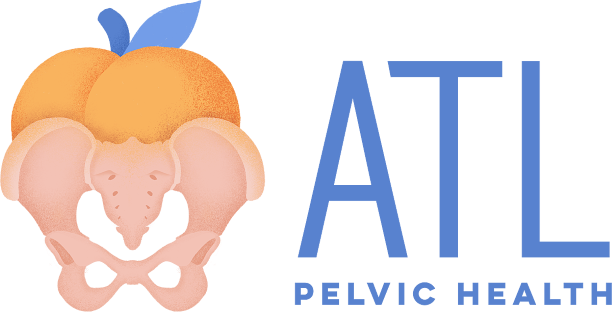Return To Running Without Leaking
Here’s the thing, most women are cleared to return to “all normal exercises” at their 6 week follow up appointment with their OBGYN or midwife. But what exactly does that mean? What activities are “safe” to go back to? What activities should you still be cautious about? We should be treating our postpartum moms the same way we treat athletes after an ACL reconstruction surgery. After an ACL repair, there is a specific protocol to follow. First, working on range of motion and then gradually building on strength and balance until the athlete can return to running or jumping without pain. Yet, after new moms have either had a vaginal delivery or had a cesarean birth (both are major accomplishments!), we just let them “heal” for 6 weeks and then they can get back to everything they want. We don’t offer much guidance to new moms and sometimes you may feel alone trying to navigate a return to your fitness routine.
If you have goals to return to running, HIIT classes or jumping, these exercises are for you. For the first 4-6 months, you want to work on building a strong foundation. Just like a house, you want the foundation to be solid so that you aren’t peeing your pants while jumping on a trampoline or going for a 2 mile run. Here are a few exercises you can work on to build a strong foundation:
Breathing + Transverse Abdominus (TA) activation
Take a breath in and expand your ribcage wide as your belly fills with air, as you exhale, imagine you have headlamps on the front of each hip bone and in your mind’s eye you are trying to turn those headlamps towards one another. You should feel a slight drawing in or tightening of your lower abdominals but should not be squeezing or gripping your abs. This is a tricky one to master and most people do this incorrectly. I highly recommend getting assessed by a pelvic floor physical therapist to make sure you are performing these exercises correctly.
Breathing + TA activation + Pelvic Floor Contraction
Start with the same breathing pattern as above, but this time when you exhale and engage your TA, also contract your pelvic floor. Imagine you have straw coming out of your vagina and you are trying to drink a thick smoothie through the straw. Give it a try and let me know what you think!
Lower Body Strengthening Exercises
Bridge lift
Lie down on your back with your knees bent and feet hip bone width apart. Press through your heels to lift your hips up into a bridge position and then lower back down.
Bird dog
Start on your hands and knees with knees underneath your hips and hands underneath your shoulders. Start with extending the opposite arm and leg out into opposite directions. Imagine you are trying to balance a cup of water on top of your pelvis without spilling it. Focus on decreasing the amount of shifting you do as you extend your arm and leg.
Double leg squats
Standing with feet shoulder width apart and then inhale as you squat down. Imagine you are trying to sit back into a chair. Exhale as you stand back up. You can add weight to this exercise to make it more challenging.
Calf raises
Stand tall with feet hip bone width apart and lift and lower your heels.
As you start to feel more stable with these foundational exercises, you can progress to single leg exercises.
Single leg bridge
This is the same set up as a double leg bridge but lift one leg in the air or hold in a table top position. Press through the heel on the ground and keep your hips level as you lift your hips up and down.
Balance on one leg
Stand on one leg while making sure your hips stay level. I like to practice this while I am brushing my teeth or cooking something in the kitchen.
Step up
Find a sturdy chair or a step and practice stepping up while keeping one leg from touching the ground. Use your exhaling breath to step up and maintain a level pelvis.
Single leg squat
You can do this by either practicing standing up from a chair on one leg or you can start by standing on one leg and then sit back as if you are going to sit in a chair. You should be able to do 10 of these in a row!
Single leg calf raise
Start by standing on one leg and lift and lower your heel.
Did you know in other countries like France, all postpartum women are encouraged to see a pelvic floor physical therapist? I always suggest getting assessed by a pelvic floor physical therapist to make sure your pelvic floor is strong and functional before returning to running or high intensity exercise. They will be able to help better assess your breathing patterns, mobility deficits and strength deficits to make sure you have built up a strong foundation so you don’t have to worry about peeing your pants when you run. Interested in learning more? Schedule a chat with our pelvic floor PT.




